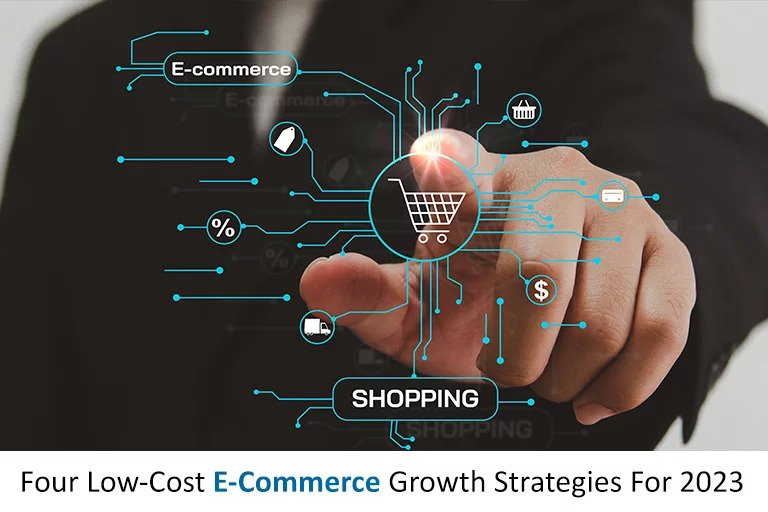The E-Commerce business is rapidly expanding. While no one knows what will happen in 2023, numerous E-Commerce Growth Strategies are becoming evident. Localizing your store to different markets is a tried and true method of increasing sales and growing your business.
What is meant by E-Commerce?
E-Commerce, or electronic commerce, is the exchange of goods and services through the internet. That is your busy city center, or brick-and-mortar store converted into zeroes and ones on the internet superhighway. It is commonly defined as any business transaction via the internet. It refers to the purchase and sale of products or services through the internet and the transmission of money and data to complete these transactions.
E-Commerce is frequently used to refer to the online sale of actual things, but it may also apply to any economic transaction aided by the internet. Although e-business encompasses all aspects of running an internet firm, E-Commerce focuses solely on exchanging products and services.
Meaning of E-Commerce Growth
E-commerce growth is raising revenue, boosting the customer base, entering new markets, and gaining a larger market share. The cheap cost of establishing an E-Commerce organization is a major element driving the rise of E-Commerce. In comparison to brick-and-mortar shops, starting an internet store is less expensive. E-Commerce reduces the need to have physical storefronts where things may be cataloged.
Importance of E-Commerce for your business
The importance of E-Commerce for your company is as follows:
- E-Commerce can assist you in saving money
Goods sold on the Internet are often less expensive than those sold in stores. As a result, you can save money. The customer bears the costs spent by a provider of goods or services in collaboration with an intermediary. The buyer may have to spend less when there are no intermediaries.
- E-Commerce assists companies in going Global
This fact, directly connected to the preceding point, permits you to sell your items anywhere in the globe. They will not feel compelled to visit your area to view what you offer. If you operate a physical business, you will be limited in the geographical region you can serve, but owning an E-Commerce website will allow you to expand your reach. Additionally, all geographical and language tango boundaries are removed.
They can buy from multiple nations if your E-Commerce is translated into different languages.
- E-Commerce can be done with less Overhead and Risk
E-Commerce stores have far fewer overheads to contend with than traditional firms. But this does not imply they are without concern. E-Commerce enterprises’ key overheads include fixed expenditures such as rent for office or manufacturing space, weekly or monthly wages, and equipment.
- E-Commerce has the potential to grow your Brand and Company
An E-Commerce site may help you widen your product/service offering, increase your business, attract new customers, and diversify your sales. It’s a wonderful way to transform your company from a traditional brick-and-mortar store to a popular, inventive one. With E-Commerce Growth Strategies, you only need one branch. Only one online store allows you to reach customers without worrying about switching locations.
Four Low-Cost E-Commerce Growth Strategies for 2023
- Localize your store to different markets
Your company will be better equipped to reach clients where they are by employing localization plan solutions. Businesses that use translation solutions can successfully increase their potential consumer base while avoiding the difficulties of cross-cultural marketing. It makes your online presence available in multiple languages across all channels and ensures that your company can reach more people where they live and work. The localization solutions enhance a positive user experience for global customers and help them trust your brand.
- Invest in modern fraud prevention
The advantages of fraud detection and prevention include preventing fraudsters from stealing your customers’ personal information or loyalty points associated with their accounts. As a consequence, you provide a superior consumer experience. Fortunately, there are emerging machine-learning methods that identify fraud using anonymized customer data. These systems outperform rule-based systems in terms of accuracy and may accept more marginal orders while detecting more fraud. Several E-Commerce platforms and third-party vendors now provide these newer methods as native extensions.
- Consider charging a restocking charge
Free shipping and returns have become commonplace for online buyers. However, free returns can encourage dishonest order bracketing and result in huge losses for merchants. Not all of your customers will be pleased with the change, but as long as you express your new policy clearly and accurately, you can expect your consumers to continue buying with you. And with significantly fewer expensive returns.
- Try out fresh audience-targeting strategies
The cost of online advertising continues to climb due to greater competition for limited ad space. Worryingly, most audience-targeting technology is based on demographic and browsing data obtained from people as they surf the web. Still, this information is getting less reliable as corporations build walls around consumer data. Online advertisements are growing more costly and ineffective.

